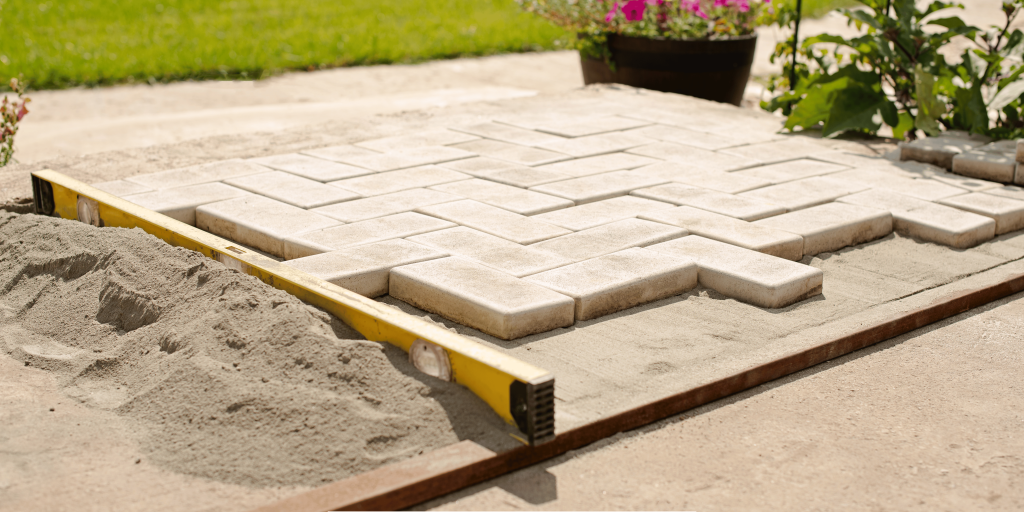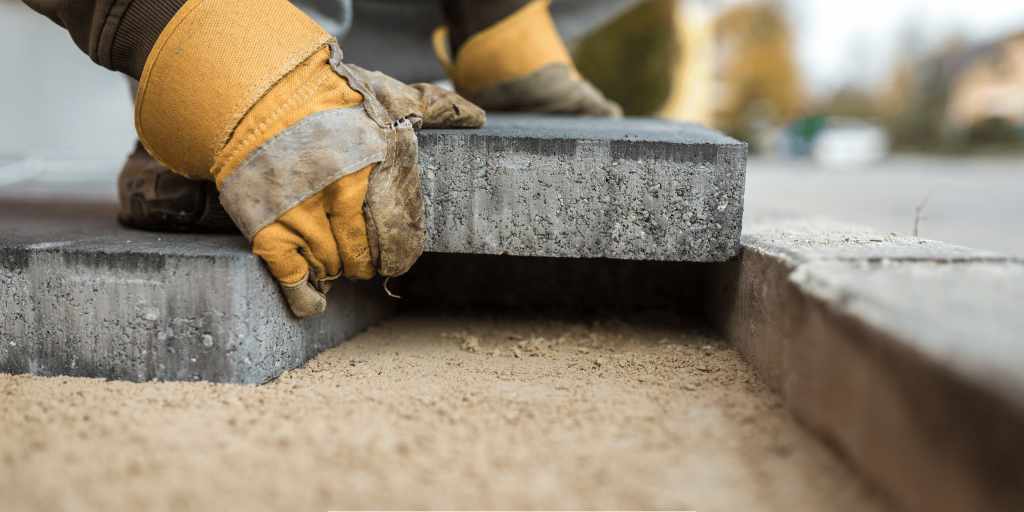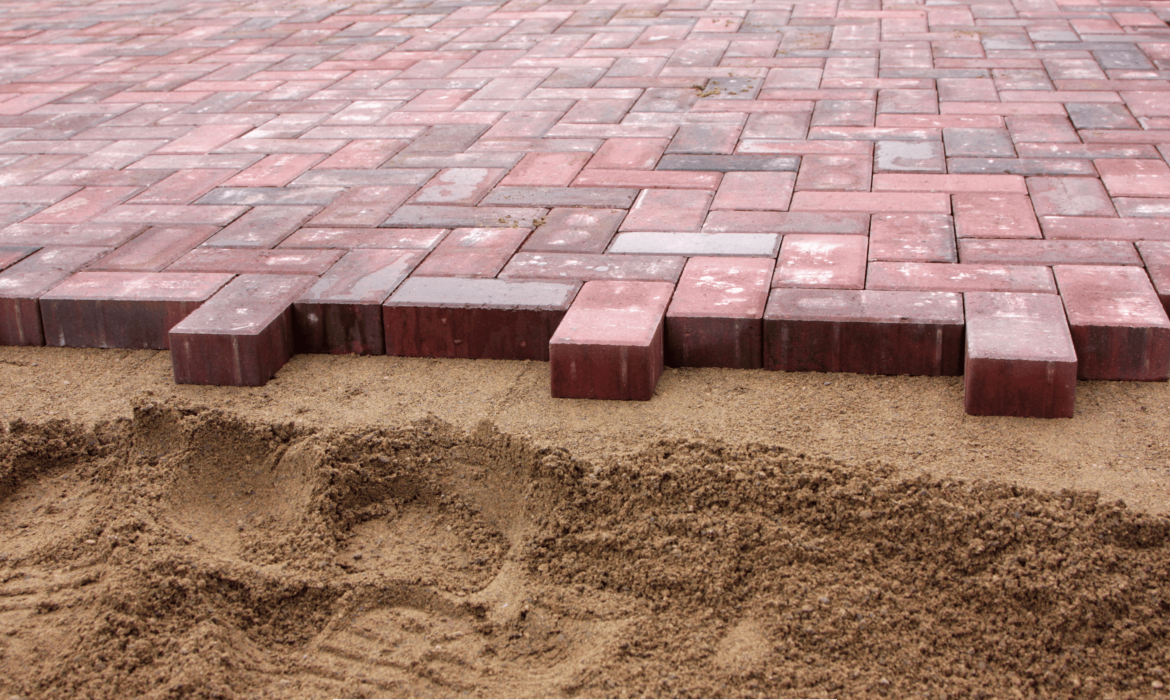Paving sand, also commonly referred to as concrete sand, is a variety of sand used for construction-related purposes in such applications as concrete and mortar, cement render, and as base material for paving roads and pathways. It has many critical applications in structures and construction purposes.
Uses as a Base Layer
Sub-Base Layer for Pavers
Sand for paving is used underneath pavers and patio stones since it forms the base and foundation of this service. Constructions need a secure foundation to succeed. The thickness of the paving sand base also varies with the traffic expected in the particular area.

Sub-layer beneath interlocking concrete pavers.
Its use is to provide support and intervene when there’s a gap between interlocking concrete pavers and bricks in the building’s construction work. The quartz grains within the sand are interlocked and packed closely with the concrete paver joints to keep the pavers from shifting.
Cement is mixed with pavement sand to create a sturdy foundation by combining it with compacted gravel and aggregate. It is also incorporated as a 1–2-inch drainage layer beneath the pavers while installing the pavement. This thin layer enables one to level and grade pavers. It also takes any irregularities in the subgrade base, giving a quality surface texture.
Uses in Building Materials
Ingredient in Concrete Mixes
It is often used as a fine aggregate/ sand in concrete fixing works such as roadways, foundations, retaining walls, pathways, etc. The sand makes the concrete more workable and more durable at the same time. Concrete sand, known as standard, conforms to ASTM C33 standards.
Mortar Base in Bricklaying & Block Masonry
In masonry work, mortars often include paving sand mixed with cement and lime to secure the bricks or blocks. This has to meet ASTM C144 or C270 requirements for incorporation into mortar. The angular particle offers good working qualities and good adhesion to masonry surfaces.
Rendering & Plastering Walls
Paving sand as an additional component in cement renders and plasters enhances bonding and hardens to a smooth, protective surface for outer and inner walls. They fit the render well since the fine sand particles have been crushed, giving a smooth surface.
Component of Stabilized Sand Bedding Layer
It can be produced for use in constructing stabilized sand bedding layers for interlocking concrete pavements in car parks, roads, airports, and ports. The addition of these elements to sand results in a semi-rigid ground.
Paving Sand vs. Other Sands
Comparison with Building Sand
Building sand, on the other hand, is less interlocking than paving sand and possesses a higher compaction rating for creating pavements with sturdy pavements. The construction of sand makes it possible for the drains to create other framing structures.
Comparison with Play Sand
While paving sand and play sand may be almost indistinguishable, it is less useful for construction applications because it has a more refined grain size. Play sand is meant for use in playgrounds and in sandboxes and is in no way supposed to be implemented on paved spaces.
Comparison with Jointing Sand
Paving sand and jointing sand exhibit contrasting finishes; paving sand is smooth, and jointing sand is more irregular. This one is specifically intended to sweep into the gaps between pavements so that they interlock the units firmly to other including pavers, concrete, natural stones etc, giving the paved surface long term stability.

Quality Considerations
Grain Size; Grain Grading.
Paving sand grain size lies between 0.075mm and 4.75 mm and upto 15% passing through 200 sieve in accordance to BS EN 12620. The greatest strength by compaction is offered by well graded sand with angular particles.
Moisture Content Standards
The sand used for moulding should not contain more than 8% of its moisture content as prescribed by that of the American Society for Testing and Materials (ASTM). Moisture hinders concrete and mortar from binding well and in pretty humid conditions, they remain weak. Before usage, customers have to test the humidity of the sand served.
Other Sand Sources: Recycled Sand and Natural sand
Paving sand is most often obtained by screening the natural pit sand but can also be virgin material produced from crushed or recycled concrete or asphalt. Depending upon the requirement of any particular project or the availability in a specific geographical area, customers may opt for recycled sand or natural sand.
From the many uses shown in the applications above, paving sand is a crucial component in the base layer or as a component in the construction of long-lasting paved surfaces or masonry building constructions for traffic and heavy use.

